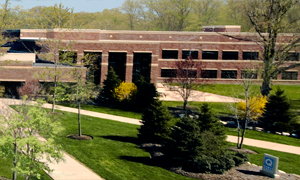Radiometer & Thermometer Calibrations
 The SOLAR EYE irradiance control system on board QUV and Q-SUN testers needs to be calibrated by the user periodically. This ensures accurate and consistent results. Either Q-Lab’s Universal Calibrator (UC) system or calibration radiometers (CR) and calibration thermometers (CT) can be used to calibrate any QUV or Q-SUN tester quickly and easily.
The SOLAR EYE irradiance control system on board QUV and Q-SUN testers needs to be calibrated by the user periodically. This ensures accurate and consistent results. Either Q-Lab’s Universal Calibrator (UC) system or calibration radiometers (CR) and calibration thermometers (CT) can be used to calibrate any QUV or Q-SUN tester quickly and easily.
It’s critical that tester calibration devices themselves receive a yearly calibration or replacement. UC radiometers and thermometers (UC10, UC20, UC202) can simply be replaced annually at low cost. CR10 and CR20 radiometers, along with CT202 calibration thermometers, should be returned to Q-Lab once per year for an inexpensive recalibration. Although replacement is generally more convenient, UC sensors can be recailbrated as well. See LW-6008 - Recalibration Return Procedure. Radiometer and thermometer recalibrations are inexpensive and fast, and can be performed at any one of our convenient, global recalibration centers located in the United States, Europe, and China.
The black panel temperature sensors in the QUV tester and the temperature/relative humidity sensors in the Q-SUN family of testers are calibrated through off-the-shelf standard reference thermometers, or are designed to be replaced annually.
All other temperature sensors in the QUV tester and temperature/relative humidity sensors in the Q-SUN family of testers are calibrated through off-the-shelf standard reference thermometers, or are designed to be replaced annually
get other languages from org page.
Common part numbers for recalibration are shown below:
- UC10/UV, /CW, /UVC – QUV Irradiance Smart Sensor
- UC20/340, /420, /TUV, /LUX – Q-SUN Irradiance Smart Sensors
- UC202/BP, /IBP – Q-SUN Temperature Smart Sensors
- UC10/RECAL – Recalibration and Return of UC10 Irradiance Smart Sensor
- UC20/RECAL – Recalibration and Return of UC20 Irradiance Smart Sensor
- UC202/RECAL - Recalibration and Return of UC202 Temperature Smart Sensor
- UC10/RECALDISP – Recalibration and Disposal of UC10 Irradiance Smart Sensor
- UC20/RECALDISP – Recalibration and Disposal of UC20 Irradiance Smart Sensor
- UC202/RECAL - Recalibration and Disposal of UC202 Temperature Smart Sensor
- CR10/RECAL – Recalibration and Return of CR10 Radiometer
- CR20/RECAL – Recalibration and Return of CR20 Radiometer
- CT202/RECAL - Recalibration and Return of CT202 Reference Thermometer
-
CR10/RECAL - Recalibration of CR10 Radiometer
-
CR20/RECAL - Recalibration of CR20 Radiometer
-
CT202/RECAL - Recalibration of CT202 Reference Thermometer
For more information about calibrating the sensors on board the QUV and Q-SUN testers, or for calibrating the calibration devices themselves, please visit our
Thermometer & Radiometer product pages.
Calibrating your reference thermometers and radiometers is important to achieving consistent and accurate weathering test results. When was the last time your reference devices were calibrated? Contact us now for a quote.
Calibration Locations
Customers can send their thermometers and radiometers to one of four, accredited global recalibration centers:
-

Q-Lab Corporation
(Worldwide Headquarters)
800 Canterbury Road
Westlake, OH 44145-1419 USA
+1-440-835-8700 (telephone)
+1-440-835-8738 (fax)
info@q-lab.com
-

Q-Lab Europe, Ltd.
Express Trading Estate
Stone Hill Road, Farnworth
Bolton BL4 9TP, England
+44-1204-861616 (telephone)
+44-1204-861617 (fax)
info.eu@q-lab.com
-

Q-Lab China
No. 800 Puxing Road
Room 206, Building D
Shanghai, China 200436
+86-21-5879-7970 (telephone)
+86-21-5879-7960 (fax)
info.cn@q-lab.com
-

Q-Lab Deutschland GmbH
In den Hallen 30
D-66115 Saarbrucken, Germany
+49-681-857470 (telephone)
+49-681-8574074 (fax)
info.de@q-lab.com
Contact Q-Lab
for pricing and shipping instructions.
You are now logged in to your account. You can now freely access all ( ) or (
) or ( ) documents. To access (
) documents. To access ( ) documents, please register your equipment here.
You are now logged in to your account. You can now freely access all (
) documents, please register your equipment here.
You are now logged in to your account. You can now freely access all ( ) or (
) or ( ) documents. To access (
) documents. To access ( ) documents, please register your equipment here.
) documents, please register your equipment here.